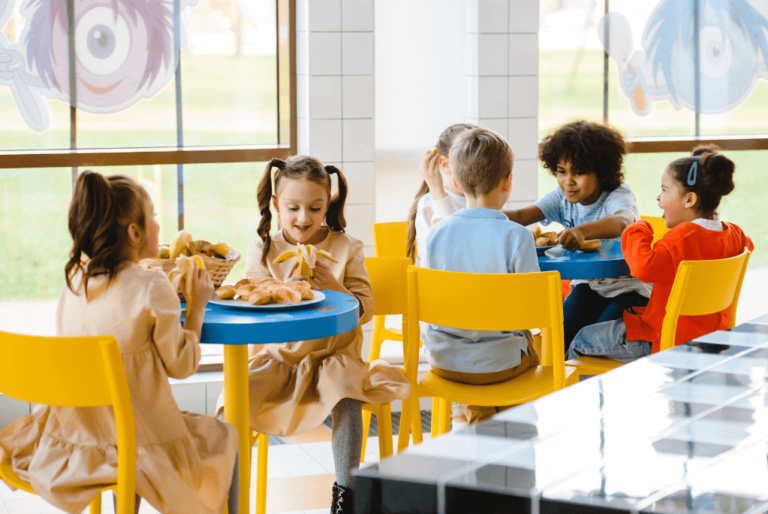Self Regulation Iep Goals : What it is
Self Regulation IEP Goals: What It Is and How It Can Benefit Your Child's Development As parents, we all want what's best for our children. We want them to succeed academically, socially, and emotionally. For children with special needs, such as those with Individualized Education Programs (IEPs), achieving these goals can sometimes be more challenging. That's where Self Regulation IEP Goals come into play. In this article, we will explore what Self Regulation IEP Goals are, how they can benefit your child's development, and provide some helpful tips for incorporating them into your child's daily routine. What Are Self Regulation IEP Goals? Self Regulation IEP Goals focus on helping children develop the ability to monitor, understand, and manage their emotions and behaviors effectively. These goals are tailored specifically to the unique needs of each child and are designed to promote self-control, problem-solving skills, and overall emotional well-being. By setting Self Regulation IEP Goals, educators and parents can work together to provide the necessary support and strategies for children to better regulate their emotions and behaviors in various environments, including the classroom, home, and social settings. Benefits of Self Regulation IEP Goals 1. Improved Emotional Well-Being: Self Regulation IEP Goals aim to improve a child's emotional well-being by teaching them effective strategies to cope with stress, frustration, and anxiety. When children learn to regulate their emotions, they are better equipped to navigate challenges and succeed in various aspects of their lives. 2. Enhanced Social Skills: Developing self-regulation skills can have a positive impact on a child's social interactions. When children understand their emotions and have strategies to manage them, they are more likely to engage in positive social behaviors, such as sharing, taking turns, and empathizing with others. 3. Academic Success: Self Regulation IEP Goals can also contribute to improved academic performance. When children have the ability to self-regulate, they can better focus on tasks, manage their time effectively, and persevere through challenges. This can lead to increased productivity and academic success. Incorporating Self Regulation IEP Goals Into Your Child's Daily Routine Now that we understand the importance of Self Regulation IEP Goals, let's explore some practical ways to incorporate them into your child's daily routine: 1. Establish a Calming Corner - Create a designated space in your home or classroom where your child can go to take a break when feeling overwhelmed or agitated. - Decorate the corner with soft pillows, calming colors, and sensory items, such as stress balls or fidget toys. - Encourage your child to spend a few minutes in the calming corner when they need to regain their composure or refocus their emotions. 2. Teach Emotional Vocabulary - Help your child develop a vocabulary to express their emotions effectively. - Introduce words such as "frustrated," "excited," "calm," and "confused" to help them label and articulate their feelings. - Practice using these words during daily conversations or journaling activities. 3. Create Visual Supports - Utilize visual aids to help your child understand and follow routines. - Create a visual schedule or checklist to outline the tasks and expectations for each day. - Incorporate visual cues, such as pictures or symbols, to represent different emotions and coping strategies. FAQs About Self Regulation IEP Goals 1. How can I track my child's progress with Self Regulation IEP Goals? - Keep a record of your child's behaviors, emotions, and progress by using a behavior chart or journal. - Communicate regularly with your child's teachers to gain insights into their behaviors and emotional regulation at school. 2. Are Self Regulation IEP Goals only for children with special needs? - Self Regulation IEP Goals can benefit all children, regardless of their needs or abilities. - Teaching self-regulation skills can help children navigate challenges and cope with different emotions effectively. 3. How can I collaborate with my child's educators to support Self Regulation IEP Goals? - Maintain open communication with your child's educators to ensure consistency between home and school. - Share strategies that have worked well at home and ask for suggestions on how to reinforce self-regulation skills in different environments. In conclusion, Self Regulation IEP Goals have the potential to significantly impact a child's emotional well-being, social skills, and academic success. By incorporating strategies such as establishing a calming corner, teaching emotional vocabulary, and creating visual supports, parents and educators can foster a supportive environment that encourages self-regulation. Remember, self-regulation is a lifelong skill, and with patience, practice, and support, children can develop these essential skills to thrive both academically and personally.  Image Source : adayinourshoes.com
Image Source : adayinourshoes.com  Image Source : numberdyslexia.com
Image Source : numberdyslexia.com  Image Source : perfectsmoothjazz.com
Image Source : perfectsmoothjazz.com  Image Source : drroseann.com
Image Source : drroseann.com  Image Source : bahamasforvisitors.com
Image Source : bahamasforvisitors.com  Image Source : kotylo.com
Image Source : kotylo.com  Image Source : neverthoughtaboutthat.com
Image Source : neverthoughtaboutthat.com  Image Source : ubicaciondepersonas.cdmx.gob.mx
Image Source : ubicaciondepersonas.cdmx.gob.mx
Emotional Self Regulation | IEP Goals | Development | A Day In Our Shoes
 Image Source : adayinourshoes.com
Image Source : adayinourshoes.com 10 Self-Regulation IEP Goals - Number Dyslexia
 Image Source : numberdyslexia.com
Image Source : numberdyslexia.com Self Regulation IEP Goals (2023)
 Image Source : perfectsmoothjazz.com
Image Source : perfectsmoothjazz.com Iep Goals Archives - Dr. Roseann
 Image Source : drroseann.com
Image Source : drroseann.com Self Regulation IEP Goals (2023)
 Image Source : bahamasforvisitors.com
Image Source : bahamasforvisitors.com Self Regulation IEP Goals (2022)
 Image Source : kotylo.com
Image Source : kotylo.com 7 Metas Medibles Del IEP Para Las Habilidades De Escritura | Expresión
 Image Source : neverthoughtaboutthat.com
Image Source : neverthoughtaboutthat.com Student Self-Regulation Rubrics | Ubicaciondepersonas.cdmx.gob.mx
 Image Source : ubicaciondepersonas.cdmx.gob.mx
Image Source : ubicaciondepersonas.cdmx.gob.mx Self regulation iep goals (2023). Emotional self regulation. 7 metas medibles del iep para las habilidades de escritura. Self regulation iep goals (2023). 10 self-regulation iep goals